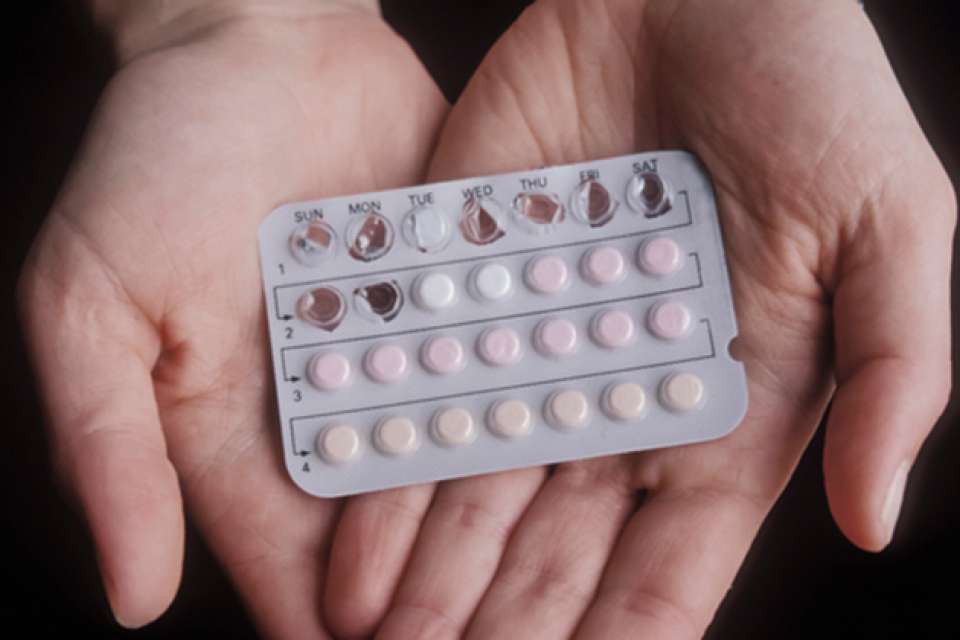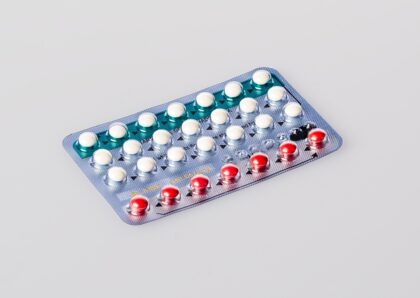How to Start a Combination Metformin Therapy?
- admin
- June 19, 2025
- 5:50 pm
- No Comments

If you have been taking metformin to manage type 2 diabetes and your blood sugar is still high, you are not alone.
While metformin is often the first line of defense, it is not always enough on its own. That is where combination therapy comes in.
By pairing metformin with another diabetes medication, you can often achieve better control, fewer complications, and, in some cases, added benefits like weight loss or cardiovascular protection.
This article will walk you through how to start combination metformin therapy the right way, what drug options exist, and how to choose a combo that fits your lifestyle and health profile.
Whether you are newly diagnosed or fine-tuning an existing regimen, you will find guidance here based on the latest clinical research and real-world applications.
This Article Covers the Following:
- Why Combine Metformin in the First Place?
- Metformin and SGLT2 Inhibitors: A Powerful Pairing
- Metformin DPP-4 Inhibitor Combo: A Gentle Yet Effective Approach
- Fixed-Dose Dapagliflozin/Metformin: One Pill, Dual Action
- Metformin Pioglitazone Combination: Tackling Insulin Resistance
- Metformin Triple Therapy: For Those Needing Extra Control
- Metformin Gemigliptin Add-On: A Promising Emerging Option
- How to Begin Combination Therapy Step by Step
- Common Side Effects and Safety Tips
- Final Thoughts
Why Combine Metformin in the First Place?
Metformin has long stood as the frontline medication for managing type 2 diabetes—and for good reason. It is effective, affordable, and generally well-tolerated.
Unlike many other drugs, it does not usually cause weight gain or hypoglycemia, making it an ideal starting point for most patients.
Metformin works by reducing hepatic glucose production and improving insulin sensitivity, but its effects can plateau over time or prove insufficient in patients with more advanced disease.
If after three to six months on an optimal dose (usually 1,500–2,000 mg daily) a patient’s HbA1c remains above target, it may signal that the body needs extra support. That is where combination therapy comes in.
Adding a second drug with a different mechanism of action—such as an SGLT2 inhibitor to promote glucose excretion or a DPP-4 inhibitor to enhance insulin secretion—can accelerate glycemic improvements and help avoid long-term complications like neuropathy or retinopathy.
Clinical research supports starting combination therapy earlier rather than waiting for full metformin “failure,” as it often leads to better durability of control and patient outcomes. Ultimately, the goal is not just to lower blood sugar, but to maintain it within a safe range for years to come, and combination therapy is often the key to doing just that.
Metformin and SGLT2 Inhibitors: A Powerful Pairing
Think of SGLT2 inhibitors as the body’s sugar bouncers—they patrol the kidneys and kick excess glucose out through the urine, no questions asked. While metformin works behind the scenes to improve insulin sensitivity and reduce liver glucose output, SGLT2 inhibitors take a more direct route: “See sugar? Flush sugar.”
When these two team up, the benefits go beyond blood sugar control. Not only do they tag-team your HbA1c into submission, but they also help with weight loss (goodbye stubborn belly fat!) and can shave points off your cholesterol induced blood pressure.
It is like hiring a personal trainer and a plumber for your metabolism—one fixes insulin, the other clears sugar clogs.
And here is where it gets really interesting: for those with cardiovascular issues or chronic kidney disease, this combo does not just manage symptoms—it can change the game entirely. Studies show it reduces the risk of heart failure hospitalizations and slows down kidney deterioration.
Plus, convenience wins. Fixed-dose combo pills like dapagliflozin/metformin (a.k.a. Xigduo XR) mean fewer pills, better adherence, and less daily hassle.
So if your current therapy is not pulling its weight, this powerful pair might just deserve a spot in your diabetes management lineup.
Metformin DPP-4 Inhibitor Combo: A Gentle Yet Effective Approach
If you are looking to lower blood sugar without tipping the scales or risking a sugar crash, the metformin and DPP-4 inhibitor combo might be your perfect match.
DPP-4 inhibitors work by boosting levels of incretin hormones, which stimulate insulin release only when it is needed—like after a meal.
That means no excessive insulin spikes and virtually no hypoglycemia.
This combination is ideal for those who value a low side-effect profile. It is weight-neutral, easy on the stomach, and does not require complex dosing. Medications like sitagliptin/metformin (Janumet) or linagliptin/metformin (Jentadueto) are often prescribed as fixed-dose combos, which cuts down on pill count and improves adherence.
Especially well-suited for older adults or individuals with mild-to-moderate diabetes, this duo provides steady glycemic control without overcomplicating treatment. If your goal is to keep things simple, safe, and effective, this combination fits the bill without fuss or frills.
Fixed-Dose Dapagliflozin/Metformin: One Pill, Dual Action
Fixed-dose formulations take the complexity out of diabetes management by combining two powerful medications into a single, easy-to-take pill.
One prime example is dapagliflozin/metformin, available as an extended-release metformin tablet that delivers round-the-clock glucose control with just one daily dose.
This dual-action pill not only streamlines your routine but also boosts consistency—especially for people with hectic lifestyles or those juggling multiple prescriptions.
Studies have shown that fixed-dose combos lead to fewer missed doses, better medication adherence, and higher patient satisfaction overall.
Its a practical solution for maintaining control without the daily pillbox puzzle or the risk of forgetting doses.

Metformin Pioglitazone Combination: Tackling Insulin Resistance
Pioglitazone, a member of the thiazolidinedione class, works by enhancing the body’s sensitivity to insulin, particularly in muscle and fat tissues.
When paired with metformin—which primarily reduces glucose production in the liver—the result is a powerful, two-pronged attack on insulin resistance.
This combination is especially beneficial for individuals with significant metabolic resistance, such as those with obesity or features of metabolic syndrome.
While pioglitazone is associated with potential side effects like weight gain, fluid retention, or edema, it also brings unique advantages—such as improving triglyceride and HDL cholesterol levels and reducing markers of inflammation.
That said, this combo is not for everyone. Due to concerns about heart failure risk and bone density loss, it must be prescribed and monitored carefully.
Under proper supervision, metformin and pioglitazone together can offer durable glycemic control in select patients struggling with insulin resistance.
Metformin Triple Therapy: For Those Needing Extra Control
Sometimes, even the dynamic duo of metformin plus one other medication is not enough to get blood sugar under control—especially when HbA1c levels remain stubbornly high despite diligent lifestyle changes and optimized two-drug therapy.
That is when triple therapy becomes the next logical step. This approach uses three complementary medications, each targeting a different aspect of blood glucose regulation.
A popular and effective combination includes metformin, a DPP-4 inhibitor (like saxagliptin or linagliptin), and an SGLT2 inhibitor (like dapagliflozin or empagliflozin).
For example, Trijardy XR combines empagliflozin, linagliptin, and extended-release metformin into one once-daily tablet—making it easier for patients to stay consistent without juggling multiple pills.
Triple therapy is typically recommended for patients with HbA1c values above 8.5% who haven’t responded adequately to dual therapy.
It is more aggressive but highly efficient, especially in those with cardiovascular risk factors, obesity, or progressive beta-cell decline.
For many, it is the key to long-term, sustainable glycemic control.
Metformin Gemigliptin Add-On: A Promising Emerging Option
Gemigliptin is a relatively new DPP-4 inhibitor that is generating interest for its strong safety profile and consistent effectiveness in lowering blood glucose.
When used alongside metformin, this combination has demonstrated significant reductions in HbA1c levels in both short-term (12–24 week) and long-term (up to 52 week) clinical studies.
For instance, patients receiving gemigliptin and metformin showed an average HbA1c drop of over 1%, with minimal risk of hypoglycemia or gastrointestinal side effects.
Although not yet available globally, this combination is widely used in countries like South Korea and India under brand names such as Zemiglo Met.
It functions similarly to more established combos like sitagliptin/metformin but may be better tolerated by patients who experience joint pain or digestive issues with other DPP-4 inhibitors.
For individuals needing a second-line therapy that’s both effective and gentle on the body, gemigliptin with metformin is a compelling option.
How to Begin Combination Therapy Step by Step?
Starting combination therapy is not something to do overnight.
Here is a simplified roadmap:
- Evaluate current control: Review your recent HbA1c, fasting glucose levels, and any side effects from metformin.
- Talk with your provider: A physician or endocrinologist will consider your cardiovascular risk, kidney function, age, and weight.
- Pick the right add-on: Choose based on your personal health goals—DPP-4 for gentle control, SGLT2 for heart/kidney benefits, or thiazolidinediones for insulin resistance.
- Start low, go slow: Begin with the lowest effective dose and monitor blood sugar closely.
- Consider fixed-dose combos: These simplify the regimen and boost adherence.
- Follow up regularly: Monitor A1c every 3-6 months and adjust therapy as needed.
Common Side Effects and Safety Tips
Combination therapies generally have good safety records, but there are still precautions to keep in mind:
- Liquid Metformin: Can cause gastrointestinal issues and, in rare cases, vitamin B12 deficiency.
- SGLT2 inhibitors: May lead to urinary tract infections and dehydration.
- DPP-4 inhibitors: Typically well-tolerated, though rare cases of joint pain or pancreatitis have been reported.
- Pioglitazone: Watch for weight gain, edema, and bone fractures in some patients.
- Sulfonylureas (if used in triple therapy): Can increase the risk of hypoglycemia.
Regular blood tests, urine tests, and symptom tracking can help catch problems early and adjust treatment before complications develop.

Final Thoughts
Combination metformin therapy is a practical, research-backed strategy for managing type 2 diabetes more effectively. It is not about piling on medications—it is about choosing complementary drugs that work better together than alone.
With options tailored to weight, heart health, insulin resistance, and kidney function, there’s a combination out there for nearly every patient profile.
If you are on metformin and not reaching your targets, do not wait for things to worsen. Always combine it with the best supplements to lower blood sugar. Doing so shall double the impact and hasten the treatment process.
Talk to your healthcare provider (such as an expert nutritional councilor) about the possibility of combination therapy. With the right match and careful monitoring, you can take greater control of your diabetes—and your health overall.
Remember, the best therapy is one that fits not just your diagnosis, but your lifestyle. And combination therapy may just be the upgrade your treatment plan needs.
References: